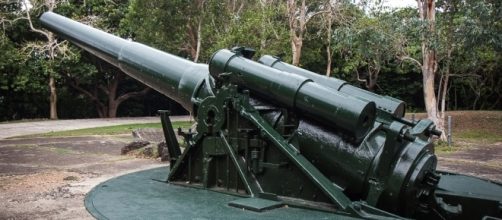The month of May is an important time in the history of the American military. As we celebrate the onset of summer in the USA, we should reflect on the past months of May where so many Americans fought bravely for democracy. Immediately after the bombing of Pearl Harbor, the Philippines was viciously attacked by Japanese forces. At the end of five months of intense fighting, after bruising the enemy as it boldly carved an empire in Asia, the Philippine-American forces lowered the stars and stripes in a gallant surrender.
How did the Philippine-American forces defend the islands?
General Douglas MacArthur knew very well the difficulty of defending an archipelago. This is why early on his command of the defense of the Philippine islands, the US joints staff devised "Plan Orange," which stated the defense of the main island of Luzon in the case of invasion by the Japanese.
MacArthur didn't like the plan as he favored a head-on defense on the beaches. However, when the Japanese invaded after bombing the major airfields in Luzon, the general had no choice but to put Plan Orange into effect and gradually retreat to the Bataan peninsula and wait for reinforcements.
The fierce battle of Bataan
On December 26, 1941, MacArthur ordered all USAFFE (The United States Armed Forces in the Far East) to retreat to the Bataan peninsula.
Thousands of Filipino and American soldiers retreated all through the night towards the peninsula and by the next morning, the primary defensive lines had been established.
On January 1942, the Japanese started attacking the peninsula but were repulsed again and again. If the Americans and Filipinos had the supplies and reinforcement promised, they could easily have repulsed the Japanese force.
However, this was not to happen as the Japanese navy had complete control of the seas around the Philippines.
The fighting in Bataan was mobile at first as USAFFE forces valiantly repulsed penetrations made by the Japanese. However by February and early March, the fighting stalled and the two forces were in stalemate. Unfortunately, the USAFFE forces as well as the Japanese had to fight diseases like dysentery and malaria, which killed thousands of soldiers on both sides.
The final attack of Bataan and the fall of Corregidor
In the last days of March, the Japanese resumed the offensive and gradually pushed the Bataan defenders back into the peninsula and to the sea. On April 3, 1942, the Japanese made a brutal thrust into the defenders' line in the midst of a strong earthquake and a massive artillery barrage. On April 9, 1942, the Bataan defenders surrendered but Corregidor, the island fortress that protects Manila bay stayed undefeated.
From April 9 to May 5, the fortress island endured relentless bombing and received thousands of shells and bombs a day. Eventually, on May, 6, 1942 the garrison surrendered and the resistance in the Philippines ended. The defense of the Philippines was crucial for the eventual success of the allies in the Pacific as it delayed the Japanese forces and prevented the possible invasion of Australia.


